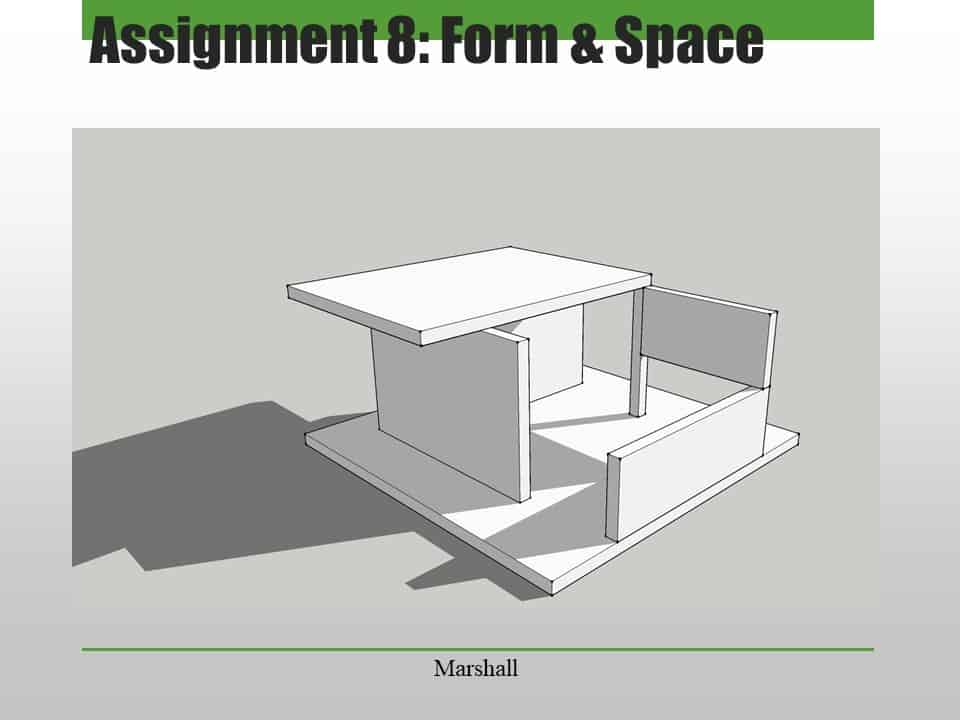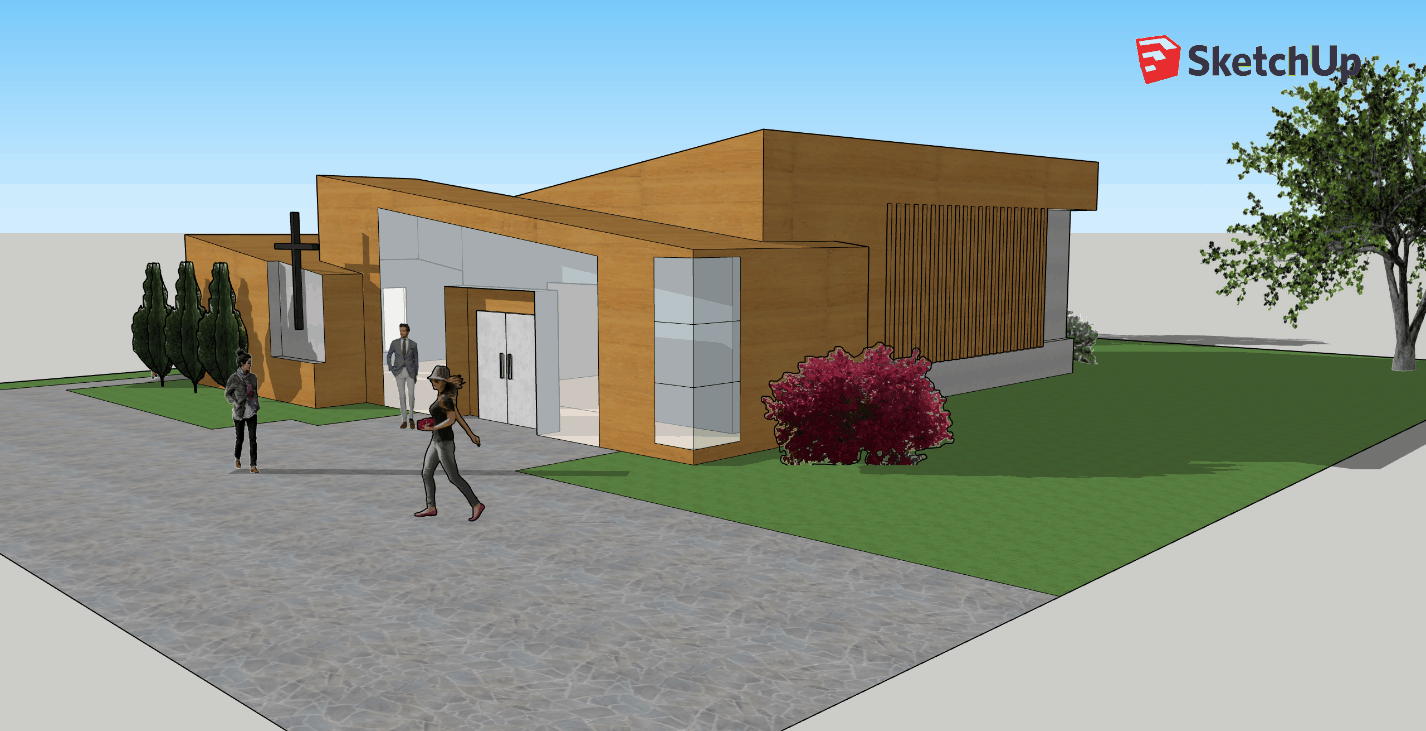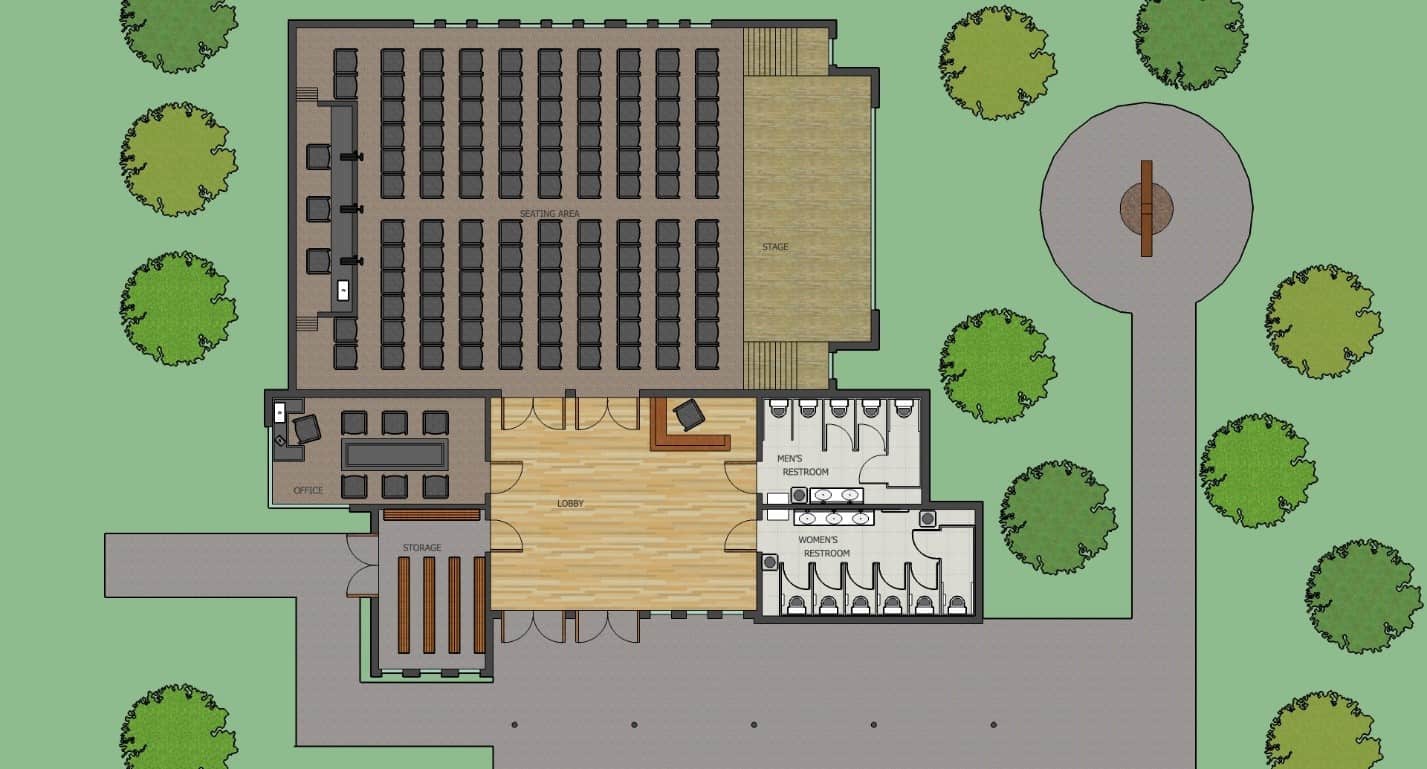Prior to SketchUp, “friendly and forgiving” were not words that came anywhere near a conversation about 3D modeling software. Architecture students would spend semesters of their lives in classes solely dedicated to demystifying a computer program that would turn design ideas into digital form.
Now when I teach one of the hardest lessons for my high school students to comprehend – form and space – they can utilize the digital medium to experience their work. Visualization is invaluable in a three-dimensional discipline. The design comes to life!
Students can quickly “see” three-dimensional space.
They can imagine, draw, and then analyze the product. They can manipulate the elements of the design, and see in real time how the alterations affect the design. After spending only one week on tutorials, the students have enough knowledge of the program to begin experimenting with it themselves. Working through a series of exercises of increasing complexity gives the students the confidence they need to use the tool in an exploratory way. This exploration is guided by, and in turn informs, a student’s creativity. They see what was in the mind’s eye in a new light, and a push or pull here or there reveals new possibilities that hadn’t been considered.
Beginning with a mass model, students can organize the design of a building.
One of the simplest features of SketchUp is giving material properties to a surface. Students can explore solid and void relationships, as well as texture and materiality.
They can create a floor plan representation of their project,
and showcase the spatial qualities in section.
Building study models in architecture is a necessary part of the design process, in education and in the profession. I have taught students how to use an exacto knife to transform a sheet of chipboard into floors and walls. But then they are glued in place. One can cut and glue, then recut and reglue, but click and drag is the language of this generation. Don’t get me wrong, there is a definite purpose and place for physical models, but the digital ones have clear benefits in beginning architecture. One of the biggest ones is that they make the online education process easier.
SketchUp provides a convenient platform for an online architecture class.
One way it facilitates education is by making it possible for me to teach a hands-on discipline while being on the other side of a computer screen from my students. I can screen-share the program and demonstrate as I talk. I can share the student’s image of his or her project and use drawing tools to make comments or suggestions. The real-time observation of an architectural object as it comes into three-dimensional being, or the logic of its orthographic views, is attainable with the use of the modeling software.
Beginning design students are able to make more progress in a shorter amount of time with the visualization aid that SketchUp provides. They can experience the architectural creations of their imaginations, and see the ramifications of their design decisions. And students can enjoy the convenience of an online class while working in a medium that fosters communication with the teacher.
SketchUp® is a registered trademark of Trimble, Inc.
About the Author
Melisa Kaiser is an architectural designer and homeschool mom of four. She completed an undergraduate degree in architecture at the University of Nebraska, and a Master of Architecture degree at the Illinois Institute of Technology where she received the Henry Adams Medal for graduating with highest honors. She studied high rise design, with an emphasis in energy efficiency and façade technology.









